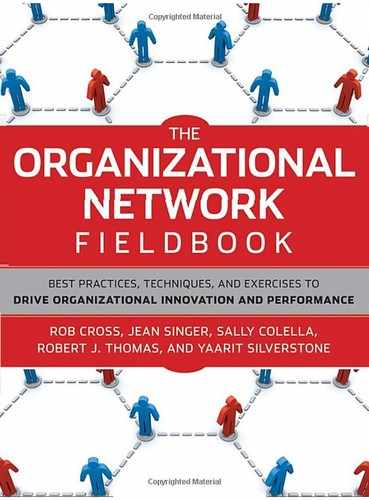4.1. An Influence Network Analysis at TechFirm
TechFirm, an information technology company that provides enterprise software solutions to the mid-market, is a good example of a firm that recognized the need to develop a new approach to its customers. TechFirm (whose name has been disguised) sells its products and services to senior technology executives—CIOs, CTOs, and VPs of technology—at firms ranging from $50 million to $1 billion in revenue. The company had relied on its geographically deployed sales force and an experienced marketing team, which leveraged print, online, and in-person methods of communication with current and prospective customers. Although TechFirm had maintained consistent growth in revenue and number of clients in recent years, the company recognized that to achieve its more ambitious growth goals for the coming years, it needed to increase the rate of new-client acquisition and revenue per customer through cross-selling and up-selling activities.
The company had made some attempts to identify and reach out to individuals who might influence client companies by, for instance, studying organizational titles and roles, and scanning publications, online forums, and event descriptions to note frequent contributors who might have a sizable following. But these efforts did not generate more customers or even more positive word-of-mouth for TechFirm. The company needed a new approach to collecting and using relationship data.
TechFirm's vice president of sales hired Community Analytics, the research and consulting firm for which I work, to help gather influence network information, analyze it, and integrate it into the company's sales and marketing strategies. While the sales team provided the impetus for adopting this influence network approach, the marketing and technical teams (product development and sales engineers) were involved throughout the process.
4.1.1. Payoffs of the Study
The payoffs were tremendous. As a result of the influence network approach, TechFirm enjoyed the following measurable successes:
22 percent increase in new-customer acquisition in regions where the influence network approach was applied, while new-customer acquisition in comparable regions fell by more than 10 percent
The launch of an online community with twice the targeted number of professionals participating
Increase in lead generation from regional and national conferences as a result of basing the invitation strategy on influence network data
18 percent increase in new customers, directly attributed to using influence network data
20 percent increase in share among target audience
Increase in positive press (unsolicited) through the work of influential network members invited to join an advisory board
We have seen companies adopt the influence network approach to achieve such tangible goals as moving into a new market, boosting market share in an existing product line, increasing sales in certain regions, improving yield through channel sales, shortening the average sales cycle, mitigating the impact of sales turnover, and improving cross-selling and up-selling.
4.1.2. A Four-Step Influence Network Approach to Sales and Marketing
To help TechFirm uncover customers' influence networks and connect with customers and prospects in more meaningful and strategic ways, we started by identifying 3,000 current and potential customers for TechFirm in three geographic regions. Within each firm, we identified individuals who were responsible for deciding whether to purchase TechFirm's products. Thanks to TechFirm's previous research on organizational roles and titles, we had a good starting point, but we had to verify this information. Along the way we added many names to the list and eliminated others. We then conducted needs assessments with all identified individuals to understand two things:
The decision-making process within the organization relative to the product of interest
Whom the decision maker turned to for information and advice about the product of interest
From responses to the first question, we were able to identify others within the firm who were involved in the decision-making process and follow up with them to determine their responses to the second question. From responses to the second question, we were able to apply network analysis to identify the individuals who were of critical importance to this audience and to reveal how they were connected to the broader population of customers and prospects. In addition to uncovering these relationships, we learned about the nature of the relationships, how individuals prefer to interact, and the challenges they face with data storage in their organizations.
On the basis of these results, we developed a four-step process for working with the data to engage influential network members and develop sustainable connections to them: (1) identify opportunities, (2) build partnerships, (3) facilitate connections, and (4) sustain relationships.
TechFirm worked through this process in a two-month period and then implemented the resulting strategies and tactics over the following year.
